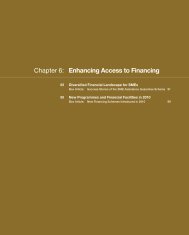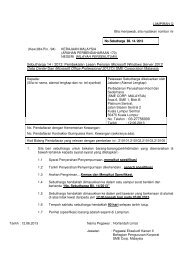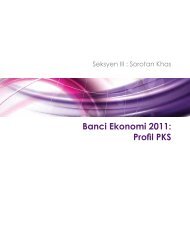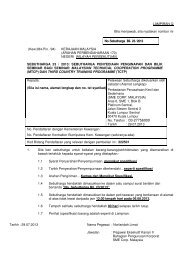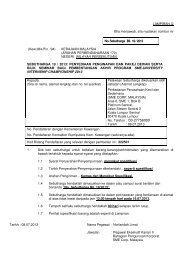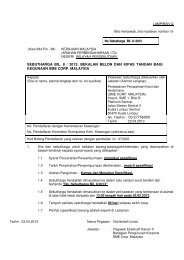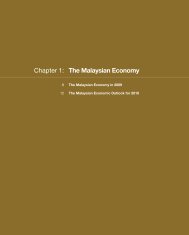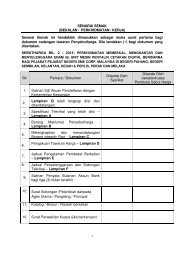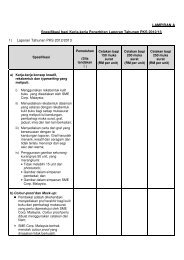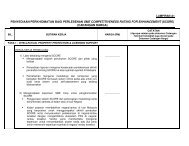Executive Summary.pdf - SME Corporation Malaysia
Executive Summary.pdf - SME Corporation Malaysia
Executive Summary.pdf - SME Corporation Malaysia
You also want an ePaper? Increase the reach of your titles
YUMPU automatically turns print PDFs into web optimized ePapers that Google loves.
8<br />
<strong>SME</strong> MASTERPLAN 2012-2020<br />
• Small number of firms contributes the<br />
most to the economy. Findings showed that<br />
fast-growing firms accounted for 70% of the<br />
additional GDP and 46% of the additional<br />
employment created in the period 2000 –<br />
2005; and<br />
• Material share of informal sector in the<br />
economy. It is estimated that the informal<br />
sector accounts for about 31% of the Gross<br />
National Income (GNI) and these are usually<br />
microenterprises where the owners are selfemployed<br />
with very few partners.<br />
Positive Impact of <strong>SME</strong><br />
Development Programmes<br />
For the first time, the Government in collaboration<br />
with the World Bank undertook an impact evaluation<br />
involving rigourous technical assessment on 15<br />
<strong>SME</strong> development programmes. The findings<br />
showed positive results from these programmes.<br />
In particular, the Human Resource Development<br />
Fund (HRDF) had shown a strong positive impact<br />
on investment, capital intensity and productivity.<br />
The rest of the programmes on non-human<br />
resource development had also indicated positive<br />
impact on capital intensity, total factor productivity<br />
(TFP), employment, as well as total output and<br />
value-added. The analysis concluded that every<br />
1% increase in programme support will result on<br />
average 1 - 5% gain in performance. However,<br />
there was limited impact on labour productivity<br />
and no impact on wages.<br />
During the Ninth <strong>Malaysia</strong> Plan period (2006 –<br />
2010), a total of RM26 billion was spent in <strong>SME</strong><br />
development programmes, representing 11.6%<br />
of the total development expenditure during the<br />
period. The programmes were aimed to address<br />
constraints faced by <strong>SME</strong>s and are categorised<br />
under the three strategic thrusts, namely<br />
enhancing access to financing; building capacity<br />
and capability; and strengthening enabling<br />
infrastructure. While there was evidence on the<br />
impact of these programmes at the macro level<br />
as seen in the encouraging performance of <strong>SME</strong>s<br />
in recent years, there was uncertainty on whether<br />
the result was due to the effectiveness of the<br />
programmes or merely from the synergistic effects<br />
of improved coordination under NSDC or due to<br />
both reasons.



